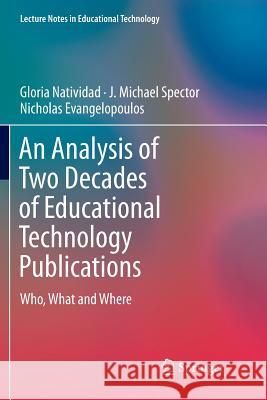An Analysis of Two Decades of Educational Technology Publications: Who, What and Where » książka
topmenu
An Analysis of Two Decades of Educational Technology Publications: Who, What and Where
ISBN-13: 9789811343377 / Angielski / Miękka / 2018 / 202 str.
An Analysis of Two Decades of Educational Technology Publications: Who, What and Where
ISBN-13: 9789811343377 / Angielski / Miękka / 2018 / 202 str.
cena 403,47
(netto: 384,26 VAT: 5%)
Najniższa cena z 30 dni: 385,52
(netto: 384,26 VAT: 5%)
Najniższa cena z 30 dni: 385,52
Termin realizacji zamówienia:
ok. 22 dni roboczych
Bez gwarancji dostawy przed świętami
ok. 22 dni roboczych
Bez gwarancji dostawy przed świętami
Darmowa dostawa!
Kategorie:
Kategorie BISAC:
Wydawca:
Springer
Seria wydawnicza:
Język:
Angielski
ISBN-13:
9789811343377
Rok wydania:
2018
Dostępne języki:
Numer serii:
000468790
Ilość stron:
202
Waga:
0.31 kg
Wymiary:
23.39 x 15.6 x 1.17
Oprawa:
Miękka
Dodatkowe informacje:
Wydanie ilustrowane











